 SVJP-0179-6.2014 |
The Hour of the Dragon, Fifth Hour of Day (Tatsu no koku, Hi no itsutsu toki), from the series Twelve Hours of a Modern Clock (Imayo tokei jūniji) 「今世時計十二時 辰ノ刻 日ノ五つ時」 MFA impression: 11.15315. |
 SVJP-0179-1.2014 |
The Hour of the Rabbit, Sixth Hour of Day (U no koku, Ake muttsu toki), from the series Twelve Hours of a Modern Clock (Imayo tokei jūniji) 「今世時計十二時 卯ノ刻 明六つ時」. MFA impression: 11.15317 |
 SVJP-0179-2.2014 |
The Hour of the Monkey, Seventh Hour of Day (Saru no koku, Hi no nanatsu toki), from the series Twelve Hours of a Modern Clock (Imayo tokei jūniji) 「今様時計十二時 申ノ刻 日ノ七つ時」 MFA impression: 11.39692 |
 SVJP-0179-8.2014 |
The Hour of the Horse, Ninth Hour of Day (Uma no koku, Hi kokonotsu toki), from the series Twelve Hours of a Modern Clock (Imayo tokei jūniji) 「今世時計十二時 午ノ刻 日九つ時」. MFA impression: 11.15314 |
 SVJP-0179-4.2014 |
The Hour of the Boar, Fourth Hour of Night (I no koku, Yoru yottsu toki), from the series Twelve Hours of a Modern Clock (Imayo tokei jūniji) 「今世時計十二時 亥ノ刻 夜四つ時」. MFA impression: 11.15552 |
 SVJP-0179-3.2014 |
The Hour of the Tiger, Seventh Hour of Night (Tora no koku, Yoru nanatsu), from the series Twelve Hours of a Modern Clock (Imayo tokei jūniji) 「今世時計十二時 寅ノ刻 夜七つ」. MFA impression: 11.15313 Ref.: Izzard. Kunisada’s world [LIB-2970.2022]. |
 SVJP-0179-5.2014 |
The Hour of the Ox, Eight Hour of Night (Ushi no koku, Yoru no yattsu toki), from the series Twelve Hours of a Modern Clock (Imayo tokei jūniji) 「今世時計十二時 丑ノ刻 夜ノ八つ時」. MFA impression: 11.26906 |
 SVJP-0179-7.2014 |
The Hour of the Rat, Ninth Hour of Night (Ne no koku, Yoru kokonotsu toki), from the series Twelve Hours of a Modern Clock (Imayo tokei jūniji) 「今世時計十二時 子ノ刻 夜九つ時」. MFA impression: 11.15312 |





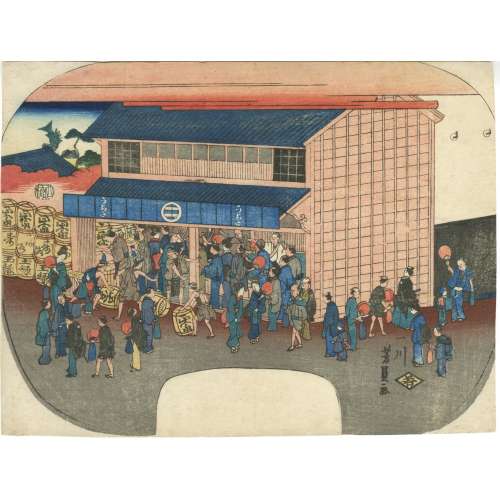

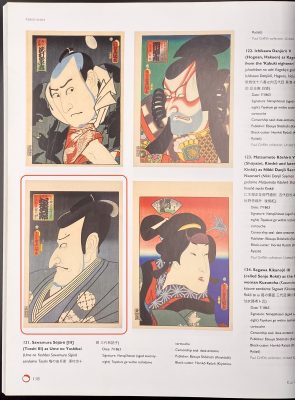 Ref.: (1) [
Ref.: (1) [


 Sano Jirōzaemon [佐野次郎左衛門] – provincial commoner who killed a famous
Sano Jirōzaemon [佐野次郎左衛門] – provincial commoner who killed a famous 

 One more example can be seen at the two upper images in Waseda University Cultural Resources Database, №
One more example can be seen at the two upper images in Waseda University Cultural Resources Database, № 

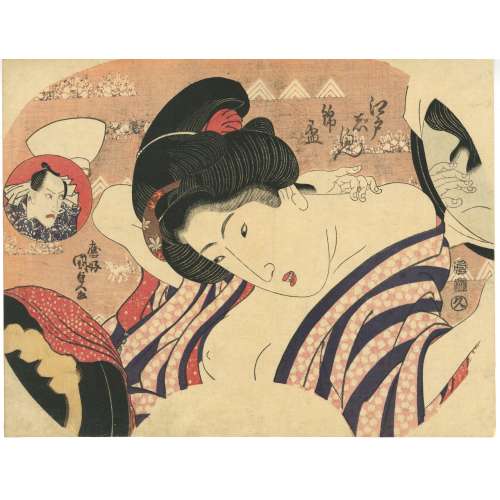


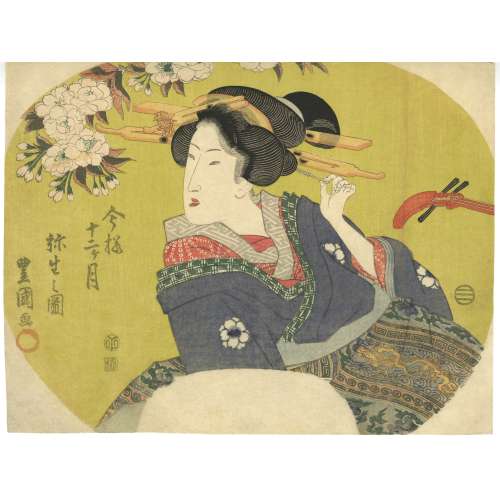

















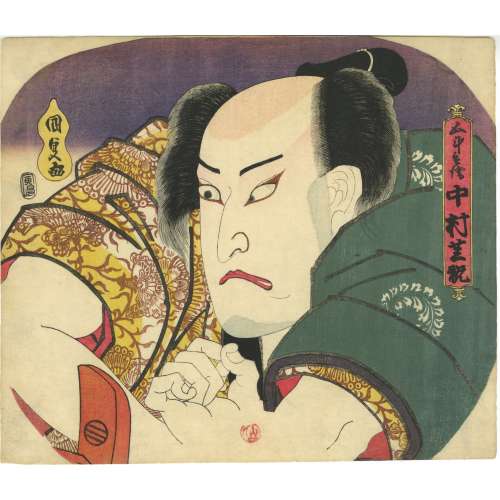
 "...The play Yoshitsune Koshigoe-jo was originally written for the puppet theatre (Bunraku) and staged for the first time in the 7th lunar month of 1754 in Ôsaka at the Toyotakeza. It was a revision of two early plays, Namiki Sōsuke's Nanbantetsu Gotō no Menuki (1735) and Yoshitsune Shin Fukumijō (1744). The title, which suggested that the play focused on Minamoto no Yoshitsune, was in fact dealing with the siege of the Ōsaka Castle, led by Tokugawa Ieyasu to destroy the Toyotomi clan in 1614 and 1615. This play was quickly forbidden because of the 4th act in which Gotobei's wife fired a gun at Yoritomo (this was of course interpreted as an attack on the Shogunate). Yoshitsune Koshigoe-jo was revised in 1770 by Toyotake Ōritsu, who completely rewrote the 4th act for a puppet production at the Kitahorieza in Ōsaka". Yoshitsune Koshigoe-jo was staged for the first time in Edo, at the Ichimuraza on the 9th lunar month of 1790, and is still performed.
Gotobei [五斗兵衛] (Gotohei or Gotobē), one of Yoshitsune’s loyal retainers, is forced to choose between his son’s life or his loyalty to Yoshitsune. Nishikidō brothers, who do not want Gotobei to become Yoshitsune's chief strategist, forced him to drink sake and get asleep. To prove Gotobei's military abilities, Izumi no Saburō fires a gun next to Gotobei's ear, and "he jumps up immediately, in full possession of his senses, ready to repulse any enemy". See: [
"...The play Yoshitsune Koshigoe-jo was originally written for the puppet theatre (Bunraku) and staged for the first time in the 7th lunar month of 1754 in Ôsaka at the Toyotakeza. It was a revision of two early plays, Namiki Sōsuke's Nanbantetsu Gotō no Menuki (1735) and Yoshitsune Shin Fukumijō (1744). The title, which suggested that the play focused on Minamoto no Yoshitsune, was in fact dealing with the siege of the Ōsaka Castle, led by Tokugawa Ieyasu to destroy the Toyotomi clan in 1614 and 1615. This play was quickly forbidden because of the 4th act in which Gotobei's wife fired a gun at Yoritomo (this was of course interpreted as an attack on the Shogunate). Yoshitsune Koshigoe-jo was revised in 1770 by Toyotake Ōritsu, who completely rewrote the 4th act for a puppet production at the Kitahorieza in Ōsaka". Yoshitsune Koshigoe-jo was staged for the first time in Edo, at the Ichimuraza on the 9th lunar month of 1790, and is still performed.
Gotobei [五斗兵衛] (Gotohei or Gotobē), one of Yoshitsune’s loyal retainers, is forced to choose between his son’s life or his loyalty to Yoshitsune. Nishikidō brothers, who do not want Gotobei to become Yoshitsune's chief strategist, forced him to drink sake and get asleep. To prove Gotobei's military abilities, Izumi no Saburō fires a gun next to Gotobei's ear, and "he jumps up immediately, in full possession of his senses, ready to repulse any enemy". See: [
